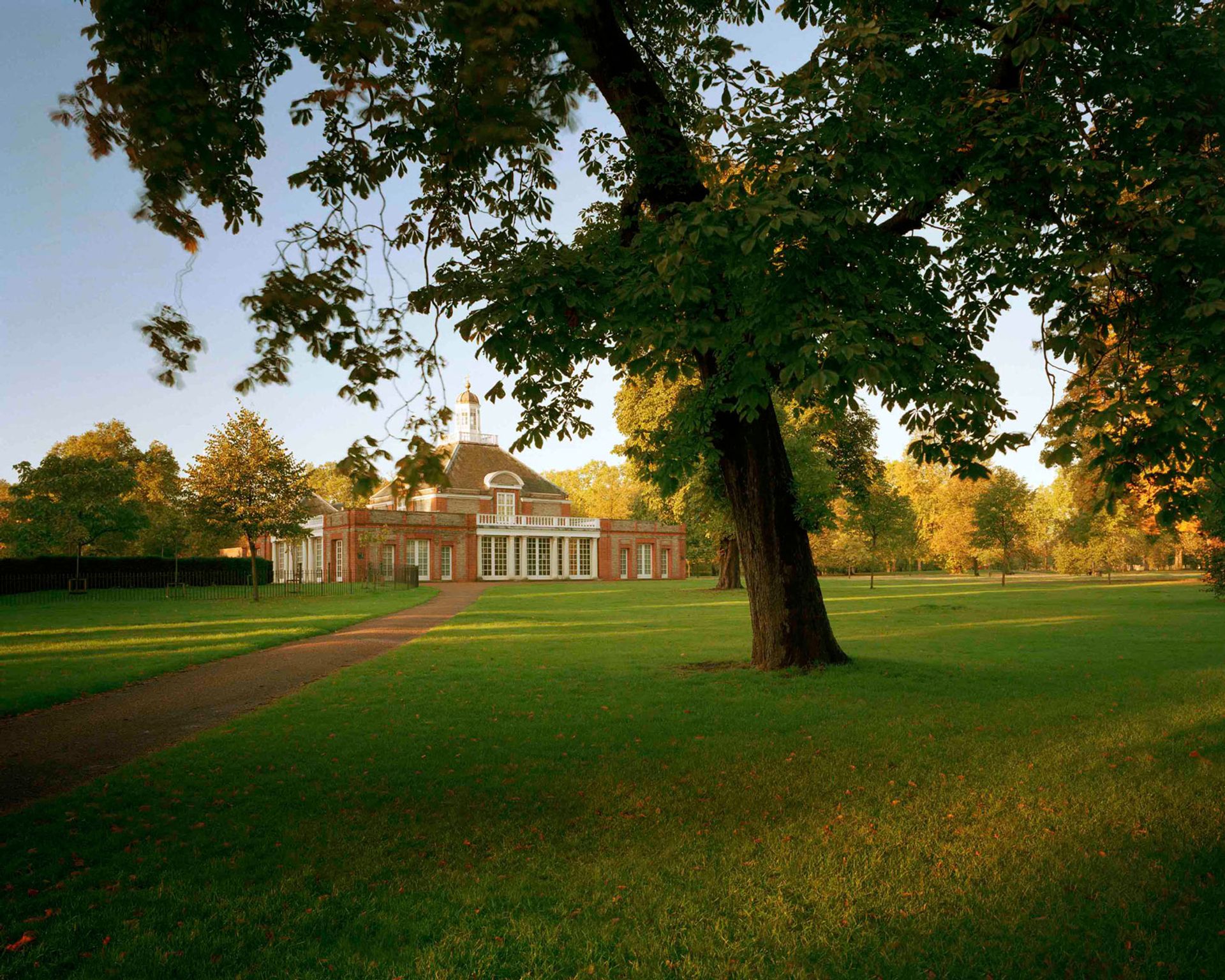In our current moment of ecological danger, we should remember the visionary artist Gustav Metzger, who died in 2017. Metzger was my friend and he never stopped telling me that artists should create works that address the urgent dangers that society faces. He called on the art world to use their agency to get people to wake up to the threat of the destruction of the planet. As he put it at the opening of the exhibition Facing Extinction in 2014, a destruction is taking place, in and of nature, on an unprecedented scale.
Gustav is deeply missed in these difficult times, but his work lives on. His landmark show Decades was presented at London’s Serpentine Gallery in 2009, he co-curated the 2014 Extinction Marathon and his worldwide call to action, Remember Nature, was facilitated by the Serpentine on 4 November 2015. We owe it to his memory that we continue this work. And this is what we have committed to do at the Serpentine this year, marking our 50th anniversary.
This turning point has allowed us to pause and think. What is our role as an exhibition space, as a facility for artists and ideas, as an archive and catalyst? This has led us to pledge ourselves to a new way of thinking and acting. Ecology will be at the heart of everything that we do.
This commitment takes in every aspect of the life of the Galleries. Our multi-platform project, General Ecology, embeds environmental and ecological concerns across the Galleries’ programmes, infrastructure and networks. We are the first contemporary art institution to appoint a curator dedicated to ecology, Lucia Pietroiusti. We have invited artists, thinkers, designers and architects from across the world to create works that respond to the climate emergency for our major project Back to Earth, which includes an exhibition opening in June.

The Serpentine Gallery is the first contemporary art institution to appoint a curator dedicated to ecology © 2007 John Offenbach
We are also introducing what our chief technology officer Ben Vickers calls “Slow Programming” – long durational projects that expand beyond the conventional limits of a museum or a finite exhibition. Works will be in the galleries, outside in the park, off site in London and internationally, online, and within the web of ideas and relationships spun from encounters among Back to Earth collaborators, projects and the public.
We are also rethinking the impact of what we do. For example, what is the ecological cost of shipping artworks for exhibitions? This is important for a gallery that does not have a permanent collection. Can we explore what might be called sustainable curation and develop new standards and practices?
One of many possible responses may be to invite artists to write instructions, scores and recipes that can be interpreted by others each time they are presented. This was something that was tried with the Do It project I started with artists Christian Boltanski and Bertrand Lavier in 1993. The result is a show that is always locally produced and uses reversible readymades so that no resources are wasted.
My personal response
As the Serpentine adapts, I must also take a good look at my own way of working. Artists have opened the world to me, and I have circuited the globe making connections among them. This has become an essential function of the contemporary curator. I am well aware of the part my trajectory has played, and that this volume of travel is unsustainable. This reckoning of course poses a dilemma, but for the world, it is one component of a widening crisis. For years I have paid into a carbon offset fund every time I fly, but this is not enough. From this year on I will follow Metzger’s advice and reduce my flying very significantly. I hope as I reduce my travel, I can contribute to popularising methods of exchange that are more tenable for the wellbeing of the planet. I want to put into practice some of the lessons I have learnt from artists.
From Ian Cheng, I have come to understand the value of reducing the enormous amount of emails that flow through our networks and depend on energy-consuming server farms. Newton Harrison’s campaign is a call to categorically stop using plastic, Rose Wylie doesn’t throw away clothes, promoting a repair culture, and 95-year-old Gianfranco Baruchello’s impressive work has led me to give up meat.
The Serpentine must look to artists for guidance on how to shape the future, and our anniversary should contemplate how a museum evolves to expand the agency and influence of artists. Improving one’s individual actions cannot hurt the collective effort to mitigate climate crisis, but it is only through systemic organisational change that sufficient progress can be made towards sustainable practices. Art institutions can be a tool for bridging geographies, ideas and ways of life. When they avail their platforms to artists like Metzger, the most dire problems of the world can be understood with honesty and hope.
• Hans Ulrich Obrist is the artistic director of the Serpentine Galleries, London


